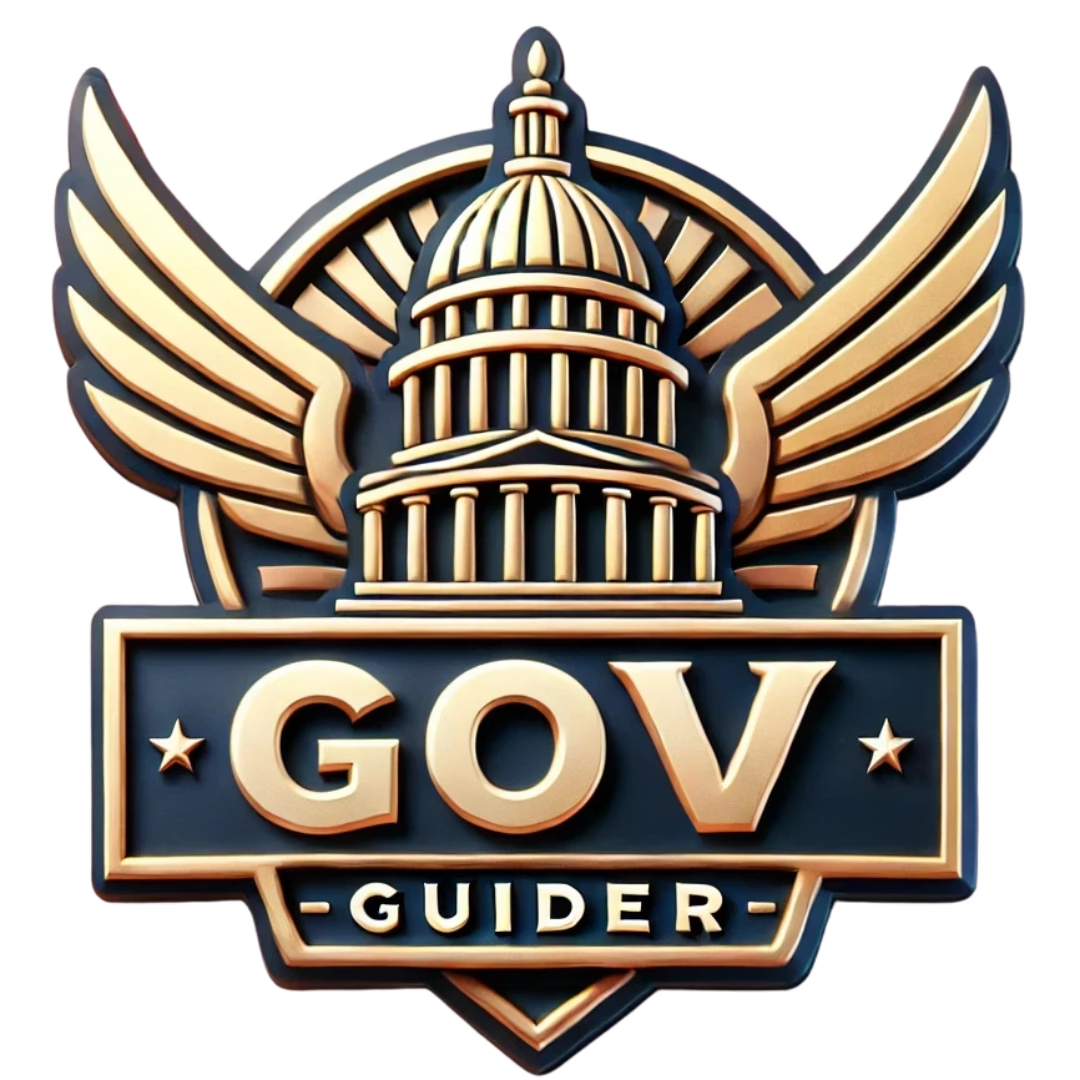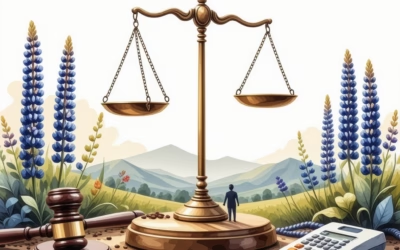Key Takeaways
- Affordable Connectivity: The Low Income Telephone Assistance Program ensures low-income households access essential phone and internet services, bridging the digital divide.
- Lifeline Program Benefits: Eligible participants can receive free monthly cell phone service, including voice, text, and data, making communication affordable.
- Simple Application Process: Applying for the Lifeline program is straightforward, requiring minimal documentation to verify eligibility for discounts or free phones.
- Multiple Providers: Numerous providers, including AT&T and SafeLink Wireless, offer competitive Lifeline services tailored to low-income consumers.
- Annual Recertification: To continue receiving benefits, participants must recertify their eligibility annually, ensuring ongoing access to affordable communication services.
In today’s digital age, staying connected is essential, especially for those navigating financial challenges. The low income telephone assistance program offers a lifeline for individuals and families seeking affordable communication options. This comprehensive guide will delve into the various facets of the program, including the best free government cell phone options available in 2025, and the invaluable benefits provided by the Lifeline Assistance Program. We will explore how to apply for these services, including the Lifeline program in South Dakota, and discuss affordable connectivity solutions that bridge the digital divide. Additionally, we will provide insights on obtaining a free government phone in Nevada, compare different Lifeline phone programs, and highlight providers like AT&T that offer government assistance. By the end of this article, you will have a clear understanding of how to maximize your benefits from the low income telephone assistance program and access essential resources for low-income support.
What is the best free government cell phone program?
The best free government cell phone program is the Lifeline program, which provides eligible individuals with free cell phone service each month. This program is designed to assist low-income households by offering essential communication services. To qualify for Lifeline, applicants must meet specific criteria, which include participation in federal assistance programs such as the Supplemental Nutrition Assistance Program (SNAP), Medicaid, Supplemental Security Income (SSI), Federal Public Housing Assistance, or demonstrate income at or below 135% of the federal poverty guidelines.
Overview of the Low Income Telephone Assistance Program
The Lifeline program is a crucial component of the low income telephone assistance program, aimed at ensuring that all individuals have access to basic communication services. Key features of the Lifeline program include:
- Free Monthly Service: Eligible participants receive a monthly allowance for voice minutes, texts, and data, which varies by provider.
- Device Options: Many providers, including Life Wireless, offer free or discounted smartphones to new customers.
- Nationwide Coverage: Lifeline services are available in all states, ensuring that individuals can stay connected regardless of their location.
To apply for the Lifeline program, individuals can visit the official Lifeline website or contact their chosen service provider directly. It is important to have documentation ready to verify eligibility, such as proof of income or participation in qualifying programs.
Key Benefits of Government Assistance Programs
Government assistance programs, including the Lifeline program, offer numerous benefits to low-income individuals and families. These benefits include:
- Improved Communication: Access to free phone service helps individuals stay connected with family, friends, and essential services.
- Increased Access to Opportunities: With reliable communication, individuals can seek employment, access educational resources, and connect with healthcare providers.
- Financial Relief: By providing free or subsidized services, these programs alleviate some of the financial burdens faced by low-income households.
For more information on various government assistance programs and how to apply, visit the Benefits.gov website.

What is the Lifeline Assistance Program in South Dakota?
The Lifeline Assistance Program in South Dakota is a federal initiative designed to make telecommunications services more affordable for low-income individuals and families. Administered by the South Dakota Public Utilities Commission, the program provides eligible subscribers with a monthly discount of up to $9.25 on their telephone or broadband services.
To qualify for the Lifeline program, applicants must meet specific income criteria or participate in certain federal assistance programs, such as Medicaid, Supplemental Nutrition Assistance Program (SNAP), or Federal Public Housing Assistance. The Lifeline discount applies to various services, including landline and mobile phone services, as well as broadband internet services that meet the minimum service standards set by the Federal Communications Commission (FCC). This initiative aims to ensure that all South Dakotans have access to essential communication services, which are vital for education, employment, and emergency situations.
For more information on eligibility and application procedures, you can visit the FCC Lifeline information page or contact local service providers who participate in the Lifeline program.
Understanding the Lifeline Program
The Lifeline program is a crucial component of the broader low income telephone assistance program, aimed at reducing the financial burden of communication services for low-income households. By providing a monthly subsidy, the Lifeline program helps ensure that individuals can maintain essential phone and internet services, which are increasingly necessary in today’s digital world.
Eligible participants can receive discounts on various types of services, including traditional landline phones, mobile phones, and broadband internet. This flexibility allows users to choose the service that best fits their needs, whether it be for job searching, staying connected with family, or accessing vital information online. The Lifeline program not only supports low-income families but also contributes to bridging the digital divide, ensuring that everyone has the opportunity to participate in the digital economy.
Lifeline Application Form Online: How to Apply
Applying for the Lifeline Assistance Program is a straightforward process that can be completed online. To begin, applicants should gather necessary documentation to prove eligibility, such as income statements or proof of participation in qualifying federal assistance programs. Once you have your documents ready, follow these steps:
- Visit the FCC Lifeline information page to access the application form.
- Fill out the application form with accurate personal information and details about your income or assistance program participation.
- Submit the application along with any required documentation.
- Wait for confirmation of your application status, which will be communicated via the contact information you provided.
For those who prefer assistance, local service providers can also guide you through the application process. Ensuring that you complete the application accurately is essential to receiving the benefits of the Lifeline program, which can significantly alleviate the costs associated with telecommunications services.
What is the Cell Phone Plan for Poor People?
The low income telephone assistance program is designed to ensure that individuals and families facing financial hardships can access essential communication services. One of the most significant initiatives under this umbrella is the Affordable Connectivity Program, which aims to provide affordable phone and internet services to low-income households. This program is crucial in bridging the digital divide, allowing those in need to stay connected with family, friends, and vital resources.
Affordable Connectivity Program Explained
The Affordable Connectivity Program offers eligible low-income individuals discounts on their monthly internet and phone bills. This program is part of a broader effort to ensure that everyone has access to necessary communication tools, especially in today’s digital age. Here are some key features:
- Monthly Discounts: Participants can receive a discount of up to $30 per month on their internet service and up to $75 for those living on Tribal lands.
- Eligibility Criteria: To qualify, applicants must meet specific income guidelines or participate in government assistance programs, such as the Supplemental Nutrition Assistance Program (SNAP) or the Low-Income Home Energy Assistance Program (LIHEAP).
- Participating Providers: Many major carriers, including Verizon and AT&T, participate in this program, offering various plans tailored to meet the needs of low-income consumers.
Lifeline Program Internet: Bridging the Digital Divide
The Lifeline program is another essential resource for low-income individuals, providing discounted phone and internet services. This federal initiative is designed to help those who may struggle to afford basic communication services. Here’s how it works:
- Discounted Services: Eligible participants can receive a monthly discount of at least $9.25 on their phone service, which can significantly reduce the financial burden of maintaining a phone line.
- Eligibility Requirements: To qualify for the lifeline program, applicants must either meet specific income thresholds or participate in certain government assistance programs, such as Medicaid or Federal Public Housing Assistance.
- Application Process: Interested individuals can apply for the Lifeline program through the National Lifeline Accountability Database (NLAD) or directly with participating providers. It’s important to provide necessary documentation to verify eligibility.
By utilizing the low income telephone assistance program and the Lifeline program, individuals can access affordable communication services, ensuring they remain connected in an increasingly digital world. For more information on the Lifeline program, visit the FCC Lifeline information page.
How can I get a free government phone in Nevada?
To obtain a free government phone in Nevada, you can take advantage of the Lifeline program, which is designed to assist low-income individuals with affordable communication services. Here’s a detailed breakdown of the process:
Steps to Apply for Lifeline Phone Service
- What is Lifeline?
Lifeline is a federal initiative that provides eligible low-income consumers with monthly discounts on wireless services, and in some cases, a free phone. - Eligibility Criteria:
- Income Requirements: Your household income must be at or below 135% of the Federal Poverty Guidelines. For 2023, this means a household of one should earn less than approximately $19,320 annually.
- Government Assistance Programs: You may qualify if you participate in programs such as:
- Medicaid
- Supplemental Nutrition Assistance Program (SNAP)
- Supplemental Security Income (SSI)
- Veterans and Survivors Pension Benefit
- Tribal Assistance Programs: If you are a participant in certain Tribal assistance programs, you may also be eligible.
- Benefits Offered:
Eligible participants receive free monthly wireless service, which typically includes a set number of minutes, texts, and data. Many providers also offer a free smartphone as part of the Lifeline program. - How to Apply:
Applications can be submitted through approved Lifeline service providers in Nevada, such as Life Wireless, TruConnect, or AirTalk Wireless. You can visit their websites or contact them directly for application forms and further instructions. - Important Considerations:
Only one Lifeline benefit is allowed per household, ensuring that the program assists as many individuals as possible. You must recertify your eligibility annually to continue receiving benefits. If your circumstances change and you no longer qualify, it is your responsibility to inform your provider to avoid penalties.
Lifeline Customer Service: Getting Help When You Need It
If you have questions or need assistance with your Lifeline phone service, reaching out to customer service is essential. Most Lifeline providers offer dedicated support to help you navigate your account, troubleshoot issues, and understand your benefits. Here are some tips for effective communication:
- Have Your Information Ready: Before calling, gather your account details, including your phone number and any relevant identification numbers.
- Be Clear About Your Needs: Whether you need help with your application or have questions about your service, clearly state your issue to receive the best assistance.
- Follow Up: If your issue isn’t resolved during your first contact, don’t hesitate to follow up. Keeping a record of your communications can help expedite the process.
For more information, you can visit the FCC Lifeline information page or contact your Lifeline provider directly for support.

Which Free Government Phone Has Unlimited Data?
When searching for a free government phone with unlimited data, several options are available through the Lifeline Program and the Affordable Connectivity Program (ACP). Here are the leading providers:
- Life Wireless: This service offers free cell phone plans that include unlimited talk and text, along with high-speed data. The amount of data can vary depending on the state, so it’s essential to check local availability.
- SafeLink Wireless: SafeLink provides eligible users with free smartphones and tablets, along with monthly service plans that include unlimited talk, text, and data. This program is designed to help low-income individuals stay connected.
- Assurance Wireless: This provider combines Lifeline and ACP benefits, offering eligible customers unlimited data, texts, and minutes. Additionally, Assurance Wireless includes 10GB of mobile hotspot data, which is beneficial for those needing internet access on multiple devices.
- StandUp Wireless: StandUp Wireless offers free minutes, texts, and data to qualifying individuals through the Lifeline program. Their plans are designed to ensure that low-income households can maintain communication without financial strain.
- TruConnect: TruConnect provides a robust plan that includes free monthly data, unlimited talk and text, and unlimited hotspot data up to the plan limit. They also offer unlimited international calls, making it a great option for those with family abroad.
- Affordable Connectivity Program (ACP): This federal initiative aims to provide discounts on internet service and potentially free devices to eligible households. It is crucial for individuals to check their eligibility and apply for these benefits to access free phone services.
Comparing Lifeline Phone Programs
Understanding the differences between various lifeline phone programs can help you choose the best option for your needs. Here are some key factors to consider:
- Eligibility Requirements: Each provider has specific eligibility criteria based on income and participation in government assistance programs. Ensure you meet these requirements before applying.
- Service Coverage: Check the coverage area for each provider to ensure you will have reliable service in your location.
- Data Limits: While some programs offer unlimited data, others may have caps. Review the details to find a plan that suits your data usage needs.
- Additional Features: Some providers offer extra features like mobile hotspot capabilities or international calling, which can be beneficial depending on your communication needs.
Does AT&T offer free government phones?
Yes, AT&T does offer free government phones through the Lifeline program, which aims to provide affordable communication services to low-income individuals and families. To qualify for an AT&T wireless free government phone, your household income must be at or below 135% of the federal poverty guidelines. These guidelines are determined by the Federal Communications Commission (FCC) and vary based on the number of people in your household and your state of residence.
Overview of Lifeline Phone Providers
The Lifeline program is a vital resource for low-income households, offering discounts on phone services and internet access. Various providers participate in this program, including AT&T, Verizon, T-Mobile, and Sprint. Each provider has its own eligibility criteria and service offerings, but all aim to ensure that low-income families can stay connected. For instance, AT&T’s Lifeline program provides options for free monthly data, talk, and text services, making it a competitive choice among other providers.
Government Assistance Programs: A Comprehensive List
In addition to the Lifeline program, there are several other government assistance programs designed to help low-income households. These include:
- Low-Income Home Energy Assistance Program (LIHEAP): This program assists eligible households with their home energy costs, ensuring they can maintain essential services.
- Supplemental Nutrition Assistance Program (SNAP): Provides food assistance to low-income individuals and families, helping them afford nutritious meals.
- Low-Income Telephone Assistance Program: Offers discounts on phone services for eligible low-income households, ensuring access to essential communication.
- LIHEAP Energy Assistance: Specifically targets energy costs, providing financial aid to help cover heating and cooling expenses.
These programs, along with the Lifeline program, form a comprehensive support system for low-income individuals, ensuring they have access to necessary services. For more information on these programs, you can visit Benefits.gov to explore available assistance options.
Conclusion: Maximizing Benefits from the Low Income Telephone Assistance Program
The low income telephone assistance program, particularly the Lifeline Assistance Program, provides essential support for individuals and families struggling to afford phone services. By understanding the benefits and resources available, you can maximize your access to these vital services.
Recap of Lifeline Assistance Program Benefits
The Lifeline program offers significant advantages for eligible low-income households, including:
- Subsidized Phone Services: Participants can receive discounts on monthly phone bills, making communication more affordable.
- Free or Discounted Devices: Many providers offer free government phones or discounted smartphones, ensuring access to essential communication tools.
- Broad Eligibility: The program is available to a wide range of low-income individuals, including those receiving benefits from programs like LIHEAP (Low-Income Home Energy Assistance Program) and other government assistance programs.
- Enhanced Connectivity: With access to phone services, individuals can stay connected with family, job opportunities, and essential services, which is crucial for improving their quality of life.
Additional Resources for Low Income Assistance Programs
To further enhance your understanding and access to assistance, consider exploring these resources:
- Lifeline Program: Official information about the Lifeline program and how to apply.
- Government Assistance Programs: A comprehensive directory to find various assistance benefits available to low-income individuals.
- National Association of State Utility Advocates: Information on utility assistance programs, including energy assistance like LIHEAP.
- Appeal a Denied Application: Guidance on how to navigate the appeals process for various assistance programs.




